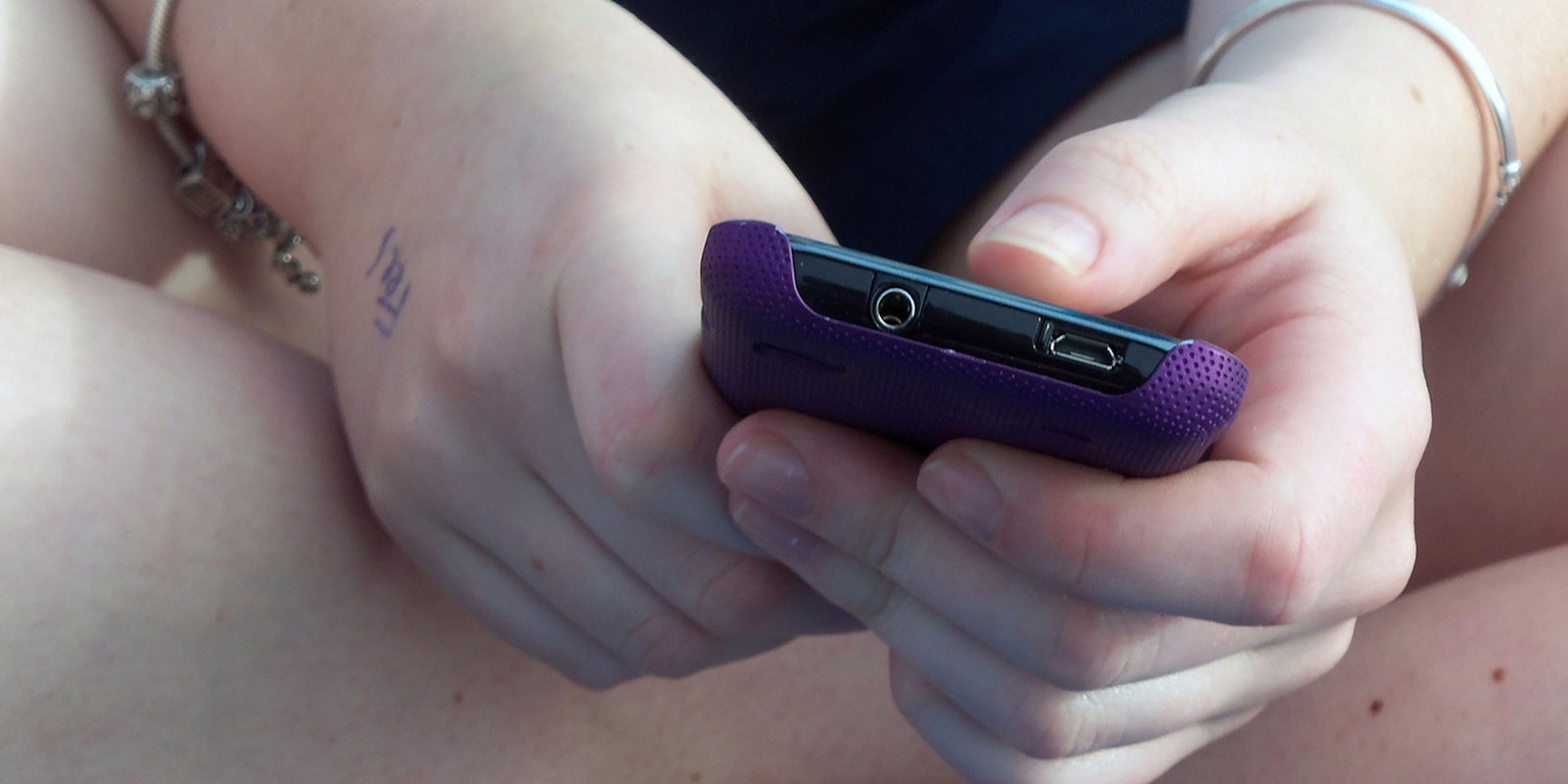Right off the bat, let’s get one thing straight: Teens should absolutely be making out, hooking up, whatever they prefer to call it. They should be messily frenching in public, to the revulsion of any elders unlucky enough to pass by. It’s their youth—they ought to rub our noses in it.
These days, though, the pubescent generation is shockingly lazy when it comes to finding a suitable dry-humping partner. Instead of falling for their chem lab partner or the cutie playing opposite them in a terrible drama club production of Our Town, they’re snap-judging faces on hookup apps as if already in their mid-30s and trying to fit mediocre dates into a demanding work schedule. (Sure, malls don’t have the allure they once did.)
Seven percent of Tinder’s users are aged 13 to 17, which seems especially egregious when the Internet itself offers so many opportunities for romantic connections, often in the form of social networks that aren’t explicitly dating-oriented (just ask James Franco).
Twitter, Tumblr, and Facebook are all there to facilitate your awkward courtship while providing a suitable digital buffer against blushing embarrassment, the way AOL Instant Messenger did for me.
Of course teens are still developing all those critical faculties of interpersonal connection, trust, empathy, and love that will complete you as a person. But when you’re surrounded by hundreds of peers and fizzing with hormones, there’s no reason you should have difficulty deciding who to have a crush on without an algorithm.
But the algorithms are here. Mylol, the “#1 teen dating site” in the U.S., Australia, U.K. and Canada, boasts 300,000 members worldwide. Jcrush, too, has been infiltrated by teens. OkCupid is officially closed to anyone under 18, but lying about your age on a dating profile is par for the course. Which makes it a place where predators can safely groom their prey.
The threat of abuse is genuine and likely to worsen. In every other arena of life where an inappropriately sexual relationship between child and adult can form—classrooms, for example—laws exist to prevent just that. To think that Tinder’s architecture would allow me to stalk a high school freshman through a fake Facebook account boggles the mind. We live on a planet where cybercriminals can drive a kid to suicide by blackmailing him over a steamy Skype chat.
But I’d argue that the larger problem is a growing overreliance on technology that guides our decision-making. Beyond looks, the only metrics for matches on dating services are personality-based, and teenagers are possessed of notoriously unformed and fluid identities. Part of growing up is following different whims, stumbling into new situations, and spending time with interesting peers in the hopes of learning what makes you tick. Hookup apps are for depressive lonelyhearts and jaded young professionals who haven’t had the right chances to meet someone compatible, not a demographic corralled together for eight hours a day by federal law.
The logical extreme of the dating app craze is Mingleton, a way of scoping out strangers at bars without looking directly at them. While that may seem creepy and pointless to someone born in the 20th century, odds are they’re not the target user.
As the stigma attached to IRL liaisons with a friend “from the Internet” continues to dissolve, so too will the idea that meatspace and cyberspace are territories with clear borders. Teens don’t have to unplug completely to start living the open-ended romantic life that makes youth priceless, but if they never look up from their screens, they’ll find it awfully hard to share a meaningful first glance with a soul mate.
Photo by Summer Skyes 11/Flickr (CC BY 2.0)


